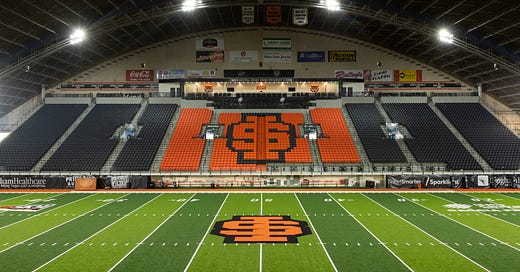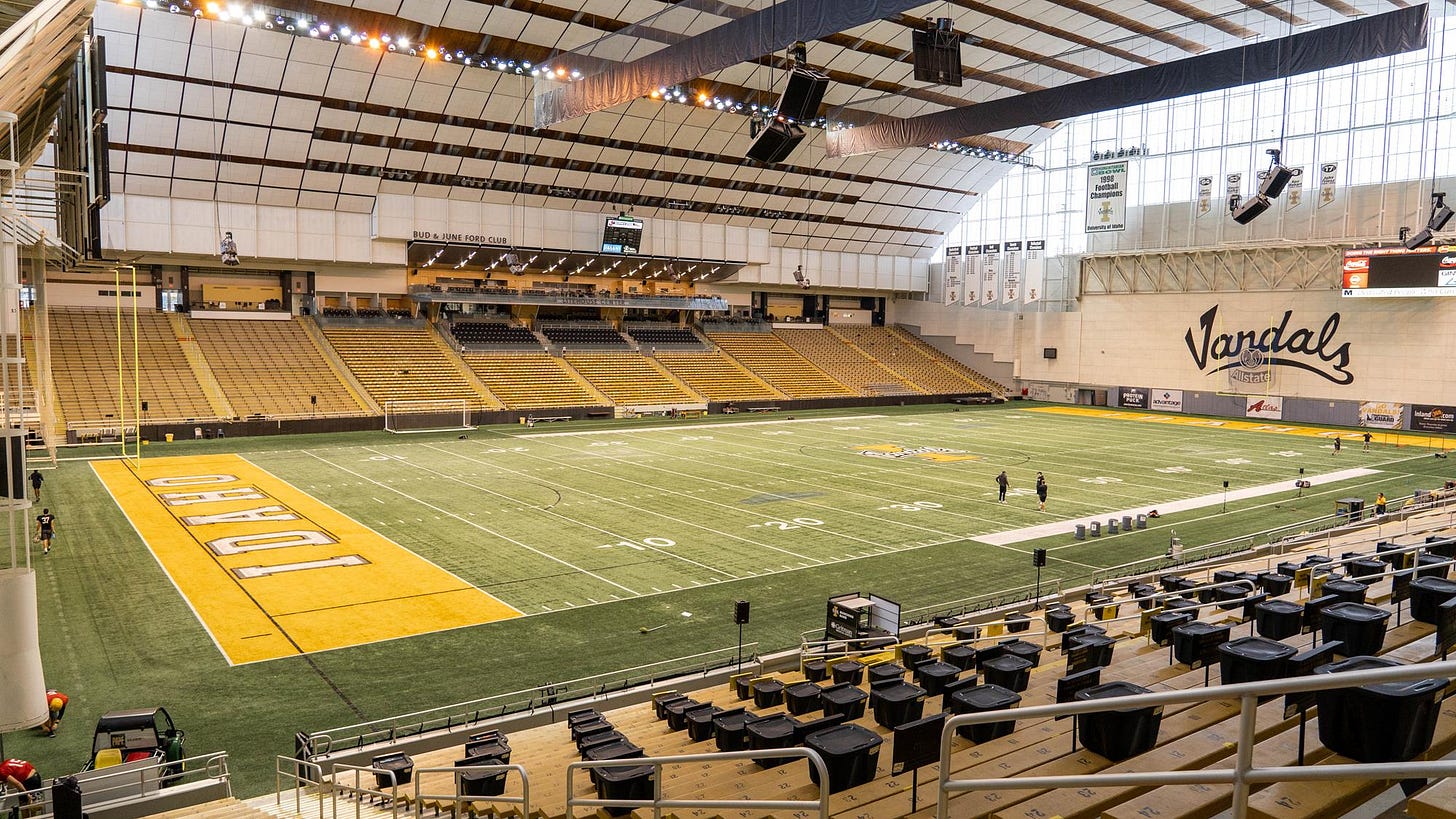State of Football: Idaho
Football in Idaho will never get much national attention, but that doesn't mean it can't be successful
Although there are a number of states with timezone lines that don't perfectly align with their borders, Idaho appears quite unique with a timezone division which splits the state into the North (Pacific Time) and South (Mountain Time).
Another interesting item is that the state's two JuCo athletic programs play in different organizations.
In Coeur d’Alene, North Idaho College is a member of the Northwest Athletic Conference (NWAC) while the College of Southern Idaho in Twin Falls is a member of the Scenic West Conference in the NJCAA, which can also be known as Region 18. There are likely pros and cons to either position, but it does seem odd that they aren't classed together.
Overall, the athletic budget for North Idaho College is about half of Southern Idaho, though it's not the simplest comparison as program offerings are fairly different.
The next oddity is that of football and Lewis-Clark State.
I wrote about the Lewis-Clark Valley Loggers before, but they do seem to be more legitimate than some other fringe programs offering their own coursework, or agreements with a school on distance education, as all Loggers are active students at Lewis-Clark State in Lewiston, ID.
As there aren't any D3 or D2 programs in the state, let's start with the one private school on the docket - College of Idaho.
Overall, the College of Idaho Yotes are one of the premier athletic programs in the NAIA - currently in 6th place through the Winter period in the Learfield Directors’ Cup after finishing 18th last season.
They are primarily a member of the Cascade Collegiate Conference which sponsors quite a diverse range of sports, though not football, which led to the Yotes playing under the Frontier Conference banner on their way to a national semi-final appearance. That loss came against the eventual National Champion Keiser Seahawks and the Yotes had an opportunity to tie the game late but came up short.
They are led by dynamic QB Andy Peters who still has 2 years of eligibility for the Yotes remaining after spending 2020 and 2021 as a Boise State Bronco without burning any eligibility before transferring a short ways northwest to Caldwell where he joined the Yotes and has had 2 great seasons so far. Expectations will remain high and anything less than a deep run in the playoffs will be a disappointment.
Next up are the opposing but similar outposts of Idaho’s public universities - the University of Idaho in Moscow and Idaho State University in Pocatello.
They sit in opposite quadrants of the state, in different time zones, but share conference membership - the Big Sky Conference - and own two of a very short list of on-campus domed stadiums.
The schools have quite similar athletic programs, which also means they are similarly small for Division 1 schools, and find most of their identity derived from the aforementioned stadiums. Athletic success for both schools has been rare and fleeting, though there is passion for intra-conference competition.
The iconic stadiums are special because they are loved, not loved because they are special, and to further the “same but different” narrative, they are oriented in opposite directions relative to their barrel design, for better or for worse.
Although the Kibbie Dome is considered widely popular, I don't think that the Holt Arena is that much worse from an objective point of view. The recent renovations look quite sharp, though it does lack the daytime brightness of Kibbie and its translucent paneling.
The cream of the crop in the state, and sole FBS program, is of course the Boise State Broncos. The program became known for their blue turf before finding massive football success dating back to the turn of the century.
After going 10-3 in 1999 and 10-2 in 2000 as members of the Big West, the Broncos joined the WAC for 2001. From 2002-2019 the program had a record of 201-37 including a 3-0 record in the Fiesta Bowl with all 3 victories coming against a higher-ranked opponent.
They were able to leverage their relatively high national recognition into preferential treatment in the Mountain West’s broadcast agreement - bringing in greater revenue than their conference-mates. This will surely be a contentious issue with negotiations coming up soon for a new agreement as the Broncos haven't had the same success and Mountain West-promoting presence in recent years. It's a well-manages athletic program but they need to careful not to dwell on the past.
Their reign of terror is unlikely to end quietly as they still managed to turn a 5-5 start to last season into a MWC Championship. That mediocre start cost HC Andy Avalos his job while Spencer Danielson went 3-1 in the interim. He'll only be turning 36 this Fall and has been a part of the Broncos program since 2017, but this is unsurprisingly his first opportunity to be a head coach.
They can't rest on their laurels, however, as the rest of the MWC have made improvements since last season and the quality of play should rise across the board.
There may not be many football programs in the state, but they're all interesting, and it may be a region on the rise a generation after the Boise State Broncos shocked the football world against Oklahoma.







I'd throw in that COI won the NAIA basketball championship in 2022-23. Their football program is consistently good, currently a contender for a national title, (if they get out of the tough Frontier Conference that is)